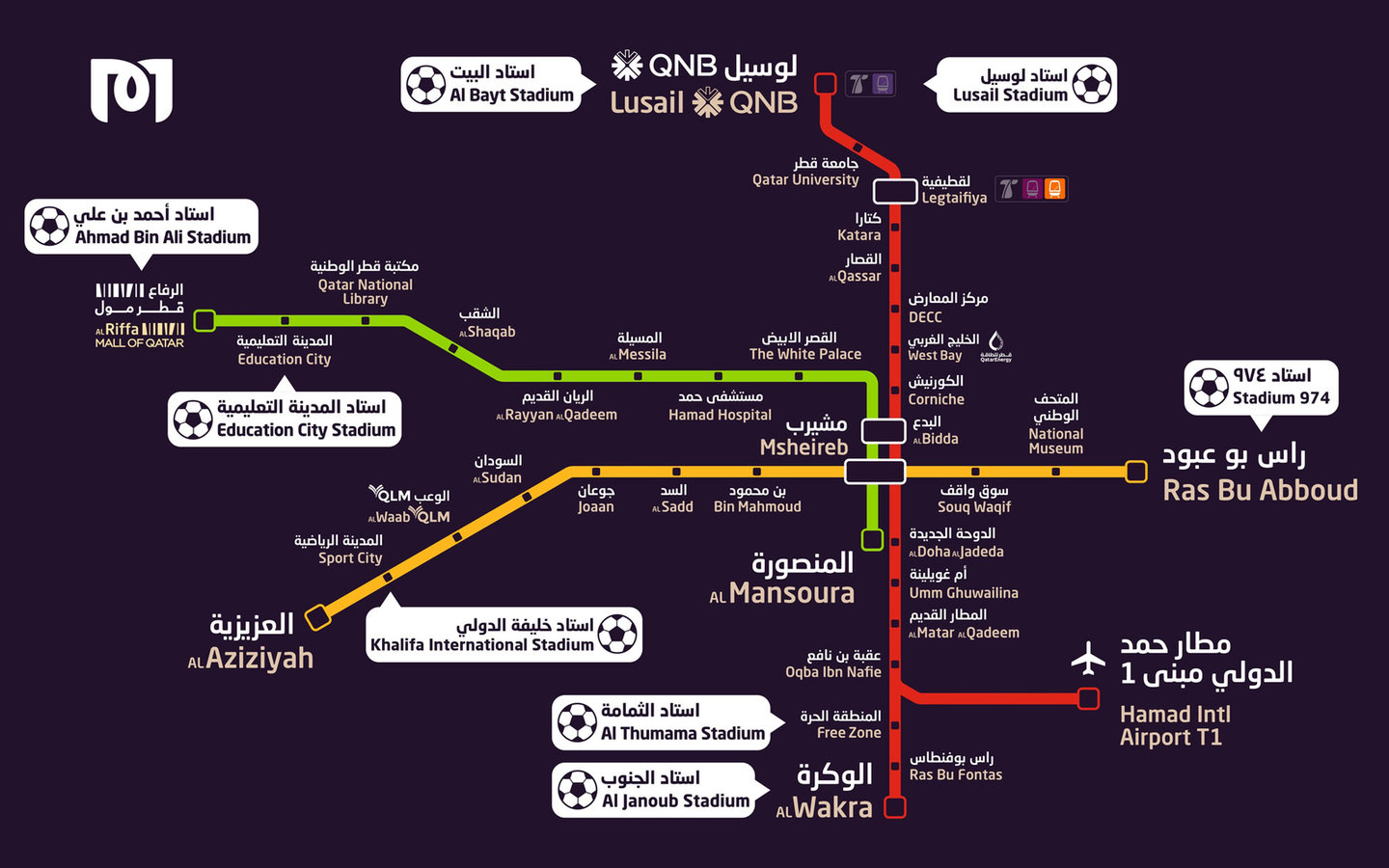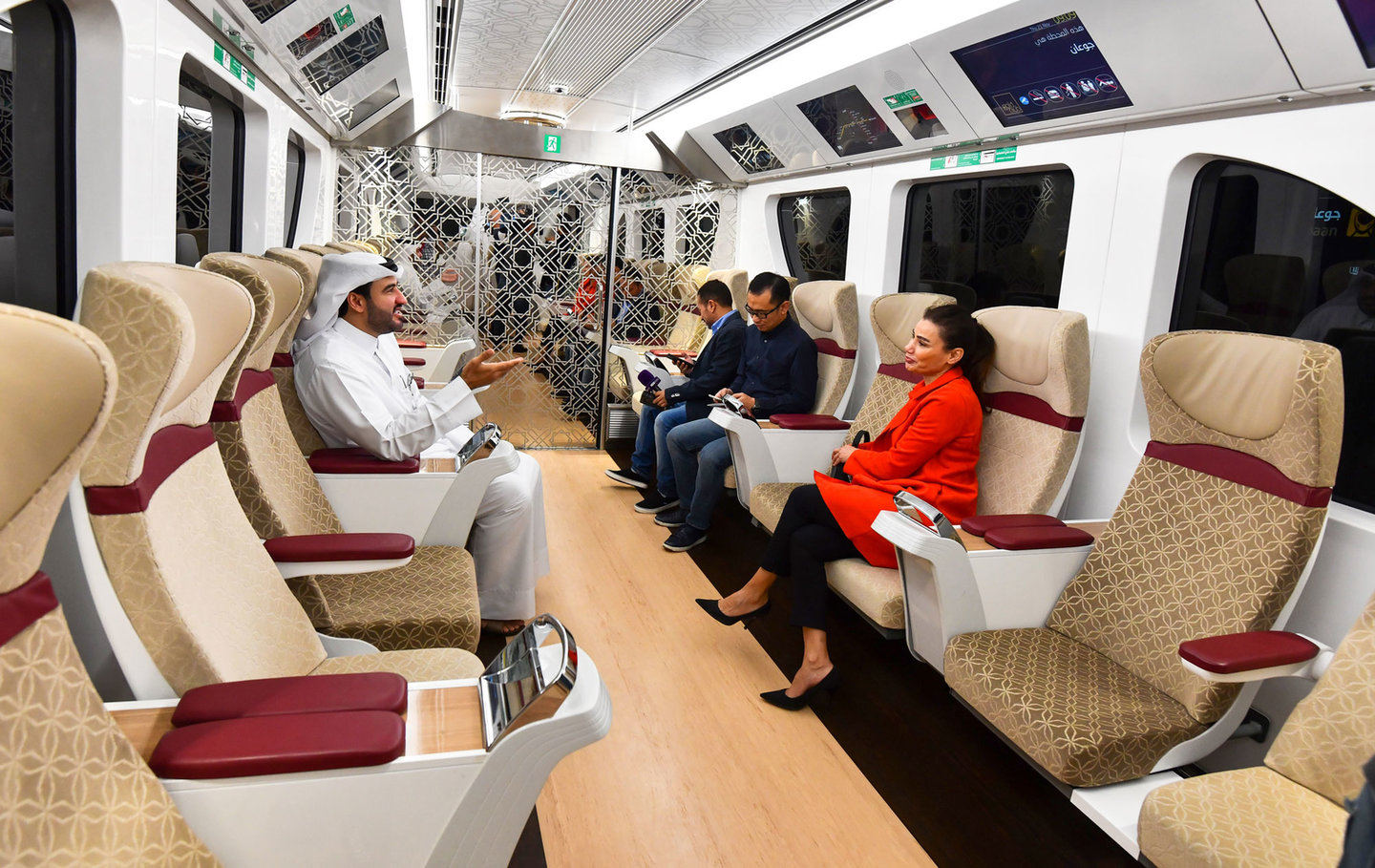Transit
Is Qatar’s rail network ready for the World Cup?
Pyramid schemes: a look into Egypt’s megaprojects
The awarding of the 2022 World Cup to Qatar was controversial for a host of reasons, not least the nation’s capability to host the large influx of visitors for the tournament. Luke Christou explores how the country has bolstered its transit network to boost capacity.
T
he long-awaited 2022 FIFA World Cup kicked off on 20 November, bringing an anticipated 1.2 million visitors to Qatar, a country with a population just shy of three million.
While this isn’t the nation’s first time holding a major sporting event – having previously hosted tournaments such as the 2006 Asian Games and the FIFA Club World Cup – the swell in visitor numbers will be far greater than anything it has previously experienced. In 2015 and 2016, Qatar’s peak years for tourism, it attracted an average of just 245,000 monthly visitors.
FIFA’s decision to award the rights to Qatar has faced endless scrutiny over whether the nation had the infrastructure to host an event of such magnitude, and understandably so.
When Qatar was confirmed as the host back in 2010, its rail network was non-existent. However, with the formation of Qatar Rail in 2011 – established to develop, operate, and maintain passenger and freight rail infrastructure – Qatar has pulled out all the stops to ensure its transport network is ready to support the masses of football fans set to descend on the city.
Brightline senior vice president, corporate affairs, Ben Porritt
A rail network fit for a World Cup
Nine years after securing the World Cup rights, Qatar Rail opened the doors to the Doha Metro, a three-line tube system spanning 37 stations across the capital. Carrying passengers at speeds of up to 62 mph and connecting five of the eight World Cup stadiums, the system is set to play an integral role in Qatar’s transport operations throughout the tournament.
The Red Line – which runs from Hamad International Airport through central Doha to Lusail, where the final will take place on 18 December – offers fully air-conditioned stations that fans will be free to enter and use throughout the tournament. Those with tickets to a World Cup game will be given a ‘Haaya card’, a mandatory fan ID, which will grant free access to Qatar’s public transport network from 10 November to 23 December.
Every train will be equipped with public Wi-Fi systems in a bid to keep fans connected as they travel between venues, while those riding in Gold Class (one of three available compartments, alongside standard and family sections), will have access to device charging points.
While Qatar has gone to great lengths to accommodate visiting fans, its authorities have also stated that it will make “no exceptions for foreigners who violate their laws”. With each train on the Doha Metro network fully equipped with CCTV, fans will need to be on their best behaviour when travelling to and from matches.

The Doha metro map showing stadium locations for the 2022 World Cup. Credit: Qatar Supreme Committee for Delivery & Legacy
“If you do consume alcohol before or after a match in the ‘Fan Zones’ be careful when travelling back to your hotel or accommodation as this will be considered ‘in public’ and therefore you could be committing a crime,” Kate Fitzpatrick, EMEA regional security director at World Travel Protection, says.
“Even actions like singing and dancing could be construed as being under the influence of alcohol, which is a crime, and outside of these zones you could be punished.”
The Doha Metro will be the centrepiece of Qatar’s rail network during the tournament. However, it comes as part of a wider expansion, which includes the newly-opened Lusail LRT tram system and a long-distance railway that will eventually span cities across Qatar, as well as other Gulf Cooperation Council (GCC) countries including Saudi Arabia, Bahrain, Kuwait, and the UAE.
Is Qatar’s rail network ready for kick-off?
While major sporting events typically coincide with improvements to local transport infrastructure, the challenge for a nation like Qatar was determining the optimal amount of expansion given its small population.
“For Qatar, the World Cup has essentially been a ‘money no object’ tournament, though it finds itself in a somewhat tricky position – specifically, in deciding what the optimum capacity of its new transport infrastructure should be,” says Simon Chadwick, professor of sport and geopolitical economy at the Skema Business School.
“The country has a population of fewer than three million, hence building too large a network would have been wasteful and unnecessary. However, with more than a million people expected to head to the event, there has been a danger that both existing and new transport infrastructure would be inadequate.

Passengers travelling in Gold Class on the Doha metro. Credit: Noushad Thekkayil/Shutterstock
“Indeed, the latter does appear to have become an issue. The country has already opened its old international airport to supplement the new Hamad International Airport. There are concerns about the metro network’s capacity, which has resulted in hundreds of electric buses being bought and city centre driving bans being introduced to ease concerns that Doha may become hugely congested during the World Cup.”
The Doha Metro typically runs 75 trains for 21 hours per day at speeds of up to 62mph, offering a total capacity of 31,200. To ease congestion, Qatar Rail has stated that it will boost services throughout the tournament, laying on 110 trains instead, which would take capacity to 45,700.
However, according to the International Civil Aviation Authority (ICAO), as many as 200,000 spectators could be travelling to matches at any given time, with host stadiums offering capacities of up to 80,000. With ridership anticipated to be up to six times greater than usual, Qatar’s vastly improved rail services may still struggle to cope with the demands of the World Cup.
Lasting legacy of the 2022 World Cup
Recent improvements to Qatar’s transport network aren’t solely due to the World Cup. In fact, Qatar Rail states that the Qatar National Vision 2030 – first outlined in 2008 – is the “guiding blueprint” for these developments.
That said, with the Doha Metro project having set a world record for the largest number of tunnel boring machines operating simultaneously in a single project, the speed at which these developments have been completed suggests the event has certainly hurried things along.
“The reality is that a city’s political will – especially in terms of not being globally embarrassed by a poor transport system – often changes when an event is heading in its direction,” Chadwick explains.
Regardless of the reasons for it, these improvements are certain to help deliver the economic, human and social developments that the National Vision promises.

A metrolink shuttle bus service waiting outside a metro station to offer a link to nearby locations. Credit: Photo Play/Shutterstock
As Qatar’s rail network takes shape, it is drastically reducing road congestion in the city. According to the Minister of Transport and Communications, Jassim Seif Ahmed al-Sulaiti, the Doha Metro and accompanying Metrolink feeder bus service have already reduced congestion in the city by as much as 25%.
While historic figures have put GDP loss due to congestion at 1-2%, figures from the 2021 Qatar Traffic Report show that this halved to just 0.3% between 2020 and 2021.
And, with the Doha Metro running on electricity using driverless trains that offer better on-time performance, reduced service traffic, and lower energy consumption, the environmental cost is far lower too.
“The Doha Metro is a remarkable project,” Michael Looby, managing director for ByrneLooby, an engineering company involved in the construction of Doha Metro’s Green Line, said.
“It leaves a legacy not only for the community of Doha, Qatar’s capital city but also for the global engineering community, showcasing how engineering and design can inspire, innovate and contribute to green cities.”
Main image credit: Daan Verstraete | Shutterstock